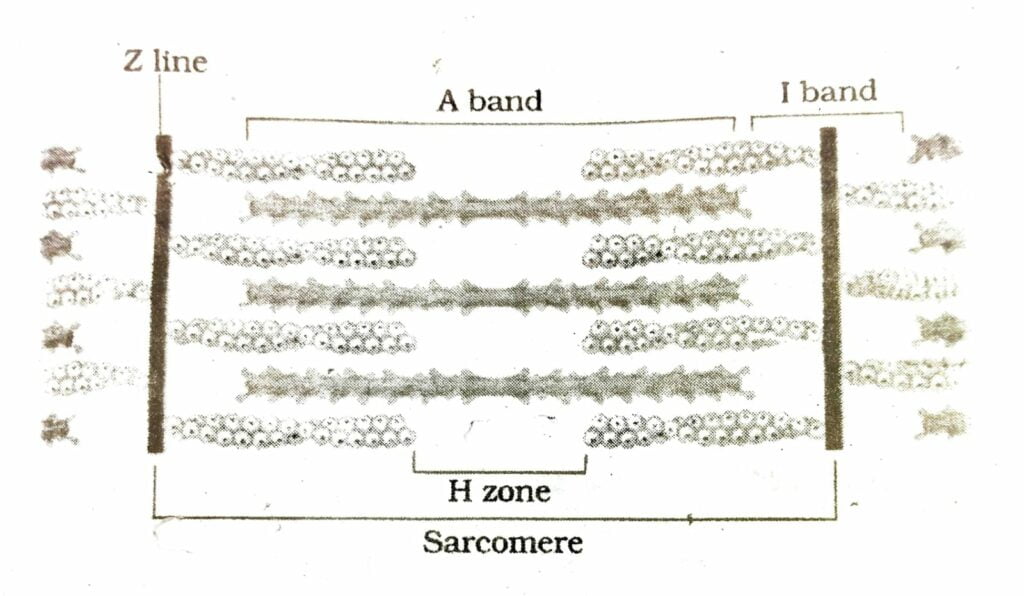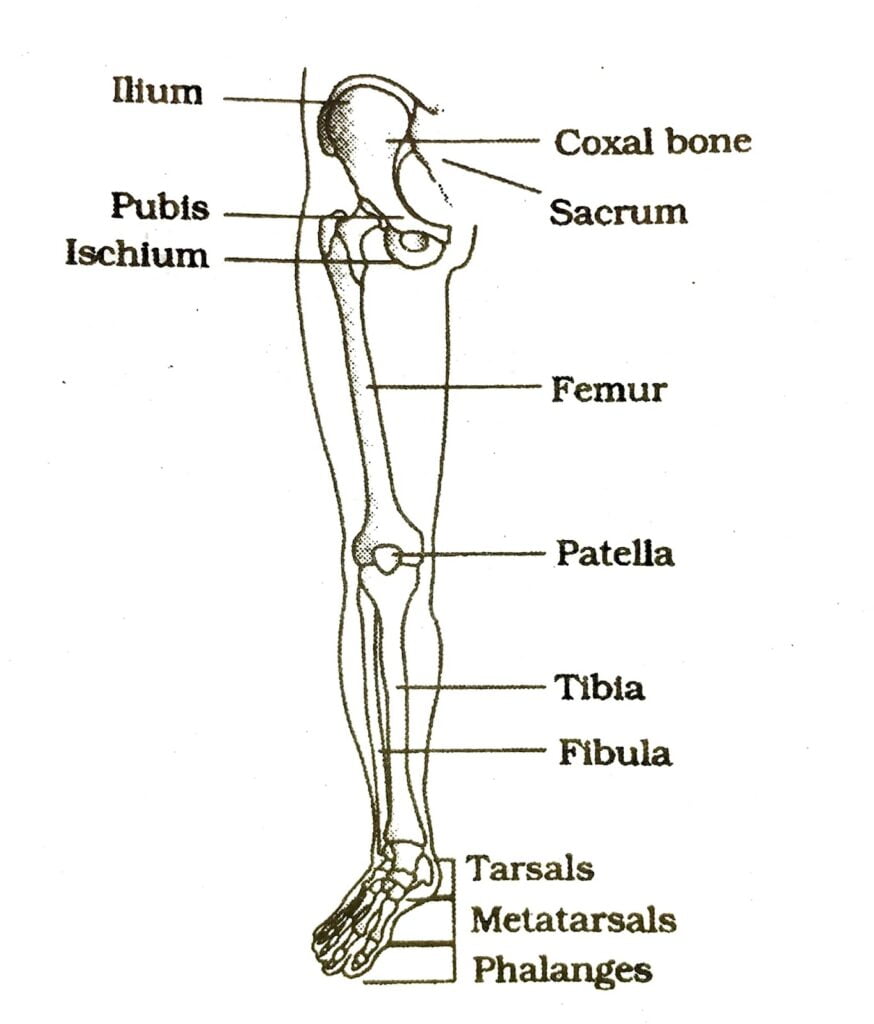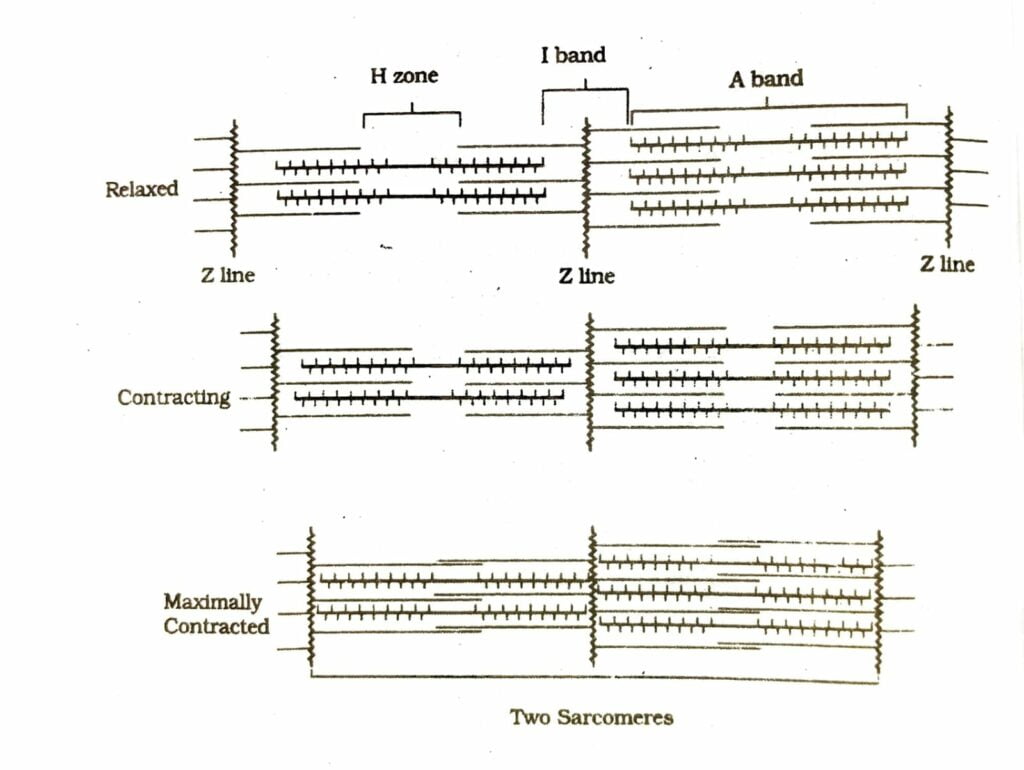Class 11 Biology Chapter 20 Locomotion and Movement, AHSEC Class 11 Biology Question Answer, HS 1st year Biology notes to each chapter are provided in the list so that you can easily browse throughout different chapters Assam Board Class 11 Biology Chapter 20 Locomotion and Movement Question Answer and select needs one.
Class 11 Biology Chapter 20 Locomotion and Movement
Also, you can read the SCERT book online in these sections Solutions by Expert Teachers as per SCERT (CBSE) Book guidelines. These solutions are part of SCERT All Subject Solutions. Here we have given Assam Board Class 11 Biology Chapter 20 Locomotion and Movement Solutions for All Subjects, You can practice these here.
Locomotion and Movement
Chapter – 20
VERY SHORT ANSWER TYPE QUESTIONS
Q.1. Define locomotion?
Ans :- Movement which result in a change of place on location is called locomotion.
Q.2. Name the different type of movement.
Ans :- Amoeboid, ciliary and Muscular.
Q.3. Based on the location, how muscles are classified.
Ans :- Base on location muscles are classified into Skeletal, Visceral and Cardiac Muscles.
Q.4. Where are Visceral muscles located?
Ans :- Visceral muscles are located in the inner walls of hollow organs of the body.
Q.5. Why visceral muscles are also termed as involuntary muscles.
Ans :- Visceral muscles are under the voluntary control of the viscerals nervous system. So they are also termed as involuntary muscles.
Q.6. Why skeletal muscles are also termed as striated muscles?
Ans :- Skeletal muscles have a striped appearance under microscope and so they are also termed as striated muscles.
Q.7. What is fascia?
Ans :- It is the connective tissue which hold together a number of muscles bundles.
Q.8. Name the 2 important protein present in myofibril.
Ans :- Actin and Myosin.
Q.9. What is sarcomere?
Ans :- The portion of myofibril between two successive ‘z’ lines is considered as the function unit of contraction and is called sarcomere.
Q.10. Give the full form of HMM and LMM.
Ans :- HMM – Heavy Meromyosin.
LMM – Light.
Q.11. What is ear Ossicles?
Ans :- Each middle ear contain 3 tiny bones ie Malleus, incus and stapes, collectively called ear ossicles.
Q.12. How many pairs of ribs are present in our body?
Ans :- 12 pairs.
Q.13. What is floating ribs?
Ans :- 11ᵗʰ and 12ᵗʰ pair of ribs are not connected ventrally so called floating ribs.
Q.14. How many bones are present in each limb?
Ans :- 30 bones.
Q.15. Name the bones of hand?
Ans :- Humerus, radius, ulna, carpal, metacarpals and phalanges.
Q.16. Name the longest bone of our body.
Ans :- Femur.
Q.17. Give 1 example of Fibrous joints.
Ans :- Skull bones.
Q.18. What happens in Gout?
Ans :- Inflammation of joints due to accumulating of uric acid crystal.
Q.19. Mention 1 common cause of Osteop ororis.
Ans :- Oestrogen level decreases.
Q.20. What is the difference between cartilaginous joint and synovial joints.
Ans :- Cartilaginous joint allows limited movement but synovial joints allows considerable movement.
SHORT ANSWER TYPE QUESTIONS
Q.21. What is the difference between locomotion and movements.
Ans :- In locomotion an individual change place or location but in movement only a part of its body moved for e.g. – eating food is movement but walking running is locomotion.
Q.22. Why visceral muscles are known as smooth muscles. Mention 1function of this muscle.
Ans :- Visceral muscles do not exhibit any striation and are smooth in appearance and so they are termed as smooth muscles.
Smooth muscles helps in transportation of food through the digestive tract.
Q.23. Give the diagrammatic representation of a sarcomere.
Ans :-

Q.24. Mention the number of bones present in the following parts of our body.
Axial skeleton, Skull, Limb, Ril.
Ans :- Axial skeleton – 80 bones.
Skull – 22 bones.
Q.25. What is myoglobulin? Why some muscles are also termed as aerobic muscles.
Ans :- Muscle contain a red coloured oxygen storing pigment called myoglobin.
Muscles containing myoglobin contain plenty of mitochondria which can utilise large amount of oxygen stored in them for ATP production. So such type of muscles are also termed as aerobic muscles.
Q.26. Disting uish between Red fibres and white fibres.
Ans :- Some muscle contain Myoglobin in large amount and it give red appearance. Such muscles are called Red fibres which some muscle possess very less quantity of myoglobin so pale in appearance such muscles are called white fibres.
Q.27. What are joints. Name the different types of joints present in our body.
Ans :- Joints are points of contact between bones and cartilages.
Different types of joints present in our body are –
(i) Fibrous joints.
(ii) Cartilaginous joints.
(iii) Synovial joints.
Q.28. Describe the structure of Actin.
Ans :- Each actin filament is made of 2 F (filamentous) actins helically wound to each other. Each F actin is a polymer of monomeric G (globular) actions. Two filaments of another protein, tropomyosin also run close to the F actin throughout its length. A complex protein troponin is distributed at regular intervals on the tropomyosin.

Q.29. Explain in detail the structure of Myosin.
Ans :- Each myosin filament is also a polymerized protein. Many Meromyosin constitute one thick filament. Each Meromyosis has 2 important part, a globular head with a short arm and a tail. The globular head in an active ATP are enzyme and has binding sites for ATP and active action.

Q.30.(a) Name the type of joints present in between them.
(i) Atlas and Axis.
Ans :- Pivot joint.
(ii) Between the carpals.
Ans :- Gliding joint.
(iii) Between carpal and metacarpal of thump.
Ans :- Saddle joint.
(iv) Between humerus and pectoral girdle.
Ans :- Ball and socket joint.
(b) Name the joints where fluid filled cavity is present.
Ans :- Synovial joints.
Q.31. Draw a well leveled diagram of a hind limb showing the different types of bones.
Ans :-

Q.32. Explain the mechanism of Muscles contraction.
Or
Explain the theory of sliding filament theory.
Ans :- A sarcomere consist of a light band and half of dark band. It also has myosin and Actin. As stimulus is given to the muscle, the actin filament 3 slides over to the myosin filament thus shortening the length of light band. The site where sliding of the filament occur is known as cross bridges. Thus the overall length of the sarcomere decreases and finally the length of the myoglobin. A muscle never expand to a stimulus but always contact in its lengths. This theory of muscle contraction is known as sliding filament theory given by H.E. Huxley and A.F. Huxley in 1954.


Hi, I’m Dev Kirtonia, Founder & CEO of Dev Library. A website that provides all SCERT, NCERT 3 to 12, and BA, B.com, B.Sc, and Computer Science with Post Graduate Notes & Suggestions, Novel, eBooks, Biography, Quotes, Study Materials, and more.


